The Emerging Market Multinationals Report
EMI publishes every year the Emerging Market Multinationals Report (EMR) authored by Lourdes Casanova and Anne Miroux, in collaboration with the Emerging Multinationals Research Network (EMRN), EMnet at the OECD Development Centre, International Finance Corporation, Inter-American Development Bank, and several universities and academics from around the world. The report monitors the performance of emerging markets multinationals and examines the growth prospects of emerging economies in today’s highly complex and uncertain world.
Click here to access all the reports or click at the cover pages below.
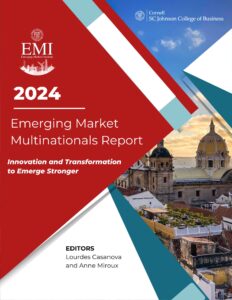
In this 2024 edition of EMI’s Emerging Market Multinationals Report, we delve into the robust landscape of emerging markets, which are not just surviving but keep on growing amidst global economic flux. ‘Innovation and Transformation to Emerge Stronger’ offers a detailed exploration of how these dynamic economies are harnessing cutting-edge innovations and strategic transformations to redefine their paths to growth. From groundbreaking technological advancements to transformative economic policies, our report provides a comprehensive analysis of the key drivers propelling emerging markets towards resilience and prosperity.
Lourdes Casanova and Anne Miroux (Emerging Markets Institute, Cornell University) in collaboration with Lorenzo Pavone, Edoardo Cozzi, and Gabriela Jimenez Echeverri (EmNet, OECD development Center); Momina Aijazuddin, Mehmet Akgunay, Shivani Komma, Ceren Ozhan, and Rafia Saleem (International Finance Corporation); Veneta Andonova and Juana García (Escuela de Administración at Universidad de los Andes in Colombia); Ricardo E. Buitrago (EGADE Business School, Tecnológico de Monterrey in Mexico), Xuelin Bu (Management School at Zhengzhou University in China), and Dr. Nalin Shinghal.
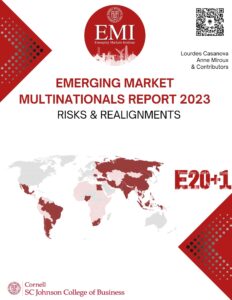
Lourdes Casanova and Anne Miroux (Emerging Markets Institute, Cornell University) in collaboration with Lorenzo Pavone and Daniel Kefer (EmNet, OECD development Center); Momina Aijazuddin, Matthew Saal, and Meraj Husain (International Finance Corporation); Veneta Andonova, Juan Pablo Soto, and Juana García (Escuela de Administración at Universidad de los Andes in Colombia); César Rosales (Universitat Pompeu Fabra in Spain); Yuan Jia-Zheng, Patricia García-Duran, Carles Brasó Broggi, Paloma Fernández-Pérez (University of Barcelona in Spain); Fred Olayele (Economic Club of Africa Network in NY); Marcelo Kawabata (Emerging Markets Institute, Cornell University); and Georges Ugeux (Law School, Columbia University).
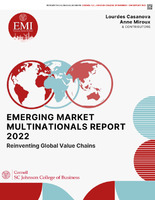
Lourdes Casanova and Anne Miroux in collaboration with Lorenzo Pavone, Lamia Mounavaraly, Melanie Vilarasau Slade and Simon Baumert (EmNet, OECD development Center); Momina Aijazuddin and Meraj Husain (International Finance Corporation); Tony Carranza (Inter-American Development Bank); Veneta Andonova and Juana García from Escuela de Administración at Universidad de los Andes in Colombia; Anabella Dávila from EGADE Business School in Mexico; Daniel Armanios (Oxford University), Natharat Mongkolsinh (Carnegie Mellon University), Kalman Kalotay and Csaba Weiner (Institute of World Economics), Limin Chen, Hongxin Wang and Xuelin Bu (Wuhan University); John Manners-Bell (TI and Foundation for Future Supply Chain) – contributed chapters to the Report.
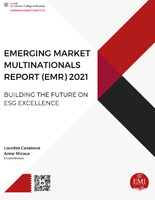
Lourdes Casanova and Anne Miroux in collaboration with Tony Carranza and Erica Chicola (Inter-American Development Bank), Piotr Mazurkiewicz (International Finance Corporation), Lorenzo Pavone (EmNet, OECD development Center), James Zhan (United Nations Conference on Trade and Development); Veneta Andonova, Juana García, and Juan Pablo Borda from Escuela de Administración at Universidad de los Andes in Colombia; Limin Chen and Xuelin Bu (Wuhan University) Gautam Jain and Daniel dos Anjos from Emerging Markets Institute.
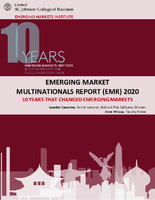
Lourdes Casanova and Anne Miroux in collaboration with James Zhan and Isya Kresnadi (United Nations Conference on Trade and Development); Momina Aijazuddin and Meraj Husain (International Finance Corporation); Veneta Andonova, Andrés Guerrero Alvarado, and Juana García from Escuela de Administración at Universidad de los Andes in Colombia; Anabella Dávila from EGADE Business School in Mexico; Manisha Barnwal and Gautam Jain (Emerging Markets Institute), Limin Chen and Zhi Qiao (Wuhan University), Peter Gammeltoft (Copenhagen Business School), Paloma Fernández Pérez (University of Barcelona), Mike Peng (The University of Texas at Dallas), Zhaohui Xuan (Chinese Academy of Science and Technology for Development), and Ravi Ramamurti (Northeastern University), Amadeo Jensana (Casa Asia), Xiaojun Huang and Ruihao Xie (Bank of China).
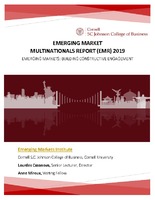
The Emerging Market Multinationals Reports were launched in 2016 at the Emerging Markets Institute in Cornell University. Authored by Lourdes Casanova and Anne Miroux, they study the largest Emerging Market Multinationals. The fourth edition focuses on how these companies fuel the creation of more stable and better-paid jobs, provide resources to conduct research and foster innovation, as well as contribute to the development of small- and medium- sized companies. The rise of Chinese multinationals as measured by their presence on the 2019 Fortune Global 500 rankings has been remarkable and the research explores the specific firms that turbocharge FDI from emerging market countries and compares them to developed markets such as the U.S. and Japan. The report also includes the description of innovation leadership from emerging markets, in particular the case of Huawei, the most emblematic of Chinese firms in innovation, global reach, and impact, as demonstrated by its visibility in the press. The report pays particular attention this year to the rising economic engagement of China in Latin America and Africa, highlighting its increasing role as a key source of finance for both continents through FDI and lending. In Latin America, though lending does not dominate the picture as it does in Africa, in some years China has been the largest source of development finance, even surpassing major development banks. In both cases, Chinese lending and FDI increased significantly over the past decade. Finally, chapters from Wuhan University in China, Universidad de los Andes in Colombia, Tecnológico de Monterrey in Mexico, Universidad del Norte in Colombia and OECD’s EMnet complement the report.
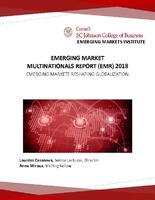
Since the turn of the century, the expansion of enterprises from emerging economies, the so-called emerging market multinationals (EMNCs), has been remarkable. The Emerging Market Multinationals Report (EMR)series, produced by Cornell University, delves into this issue and its broader implications on the global economy. The EMR 2018, by Drs Lourdes Casanova and Anne Miroux, looks at how EMNCs – led by Chinese firms – are continuing their ascension as active global acquirers and pursuers of further brand and product market differentiation. In the report, the authors also examine the implications of the drastic changes in the global economy in the past eighteen months, and explore the growing soft power of emerging economies as illustrated by the launch of initiatives such as the Chinese Belt and Road.
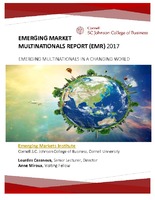
The Emerging Market Multinationals Report (EMR) series is a comprehensive exploration on the rise of Emerging Market Multinationals (EMNCs) [i]and its broader implications. This report is the second edition of the series. The authors, Lourdes Casanova and Anne Miroux examine the resilience of emerging economies in today’s challenging global environment and their growing importance as foreign investors across all regions of the world. It also unpacks the role of outward FDI policies and their development phases as reflected in the cases of China, South Korea, and Brazil. In turn, it explores how these trends impact the expansion of EMNCs and their breakthrough in the global corporate world. The report includes contributions from the OECD and other partners, which hone in on the specificities of the latest developments in Latin American and Asian emerging markets in collaboration with the OECD.
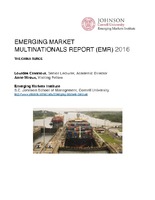
The First Emerging Market Multinationals Report (EMR) explores how Emerging economies have gained ground in wealth and influence over the past two decades, bringing about radical changes in the global economic landscape. The rise of their multinationals, the so-called emerging market multinationals (or EMNCs), is an illustration of this phenomenon. Lourdes Casanova and Anne Miroux look at the overseas expansion of EMNCs has indeed been remarkable: for instance about 20% of global outward FDI flows today are accounted for by a group of 20 top emerging economies[1], the E20; that share was 2% at the turn of the century. Not only have emerging market multinationals significantly increased their investment abroad; they have also made significant inroads in the global corporate world. For instance, today, about 30% of the firms in the Fortune Global 500 list (based on revenues) are enterprises from emerging markets; they were less than 10% ten years ago. True, China leads the trend: with 98 companies, it ranks second in term of number of Fortune 500 firms – not that far from the US (128), and much more than the number 3, Japan (54). However a wide array of emerging economies is represented: 14 countries of the above mentioned E20 grouping are represented in the Fortune Global 500 list (sometimes with only one entry in the list). The new players come in particular from China, Korea, India, Brazil, Russia, Mexico and Indonesia.
